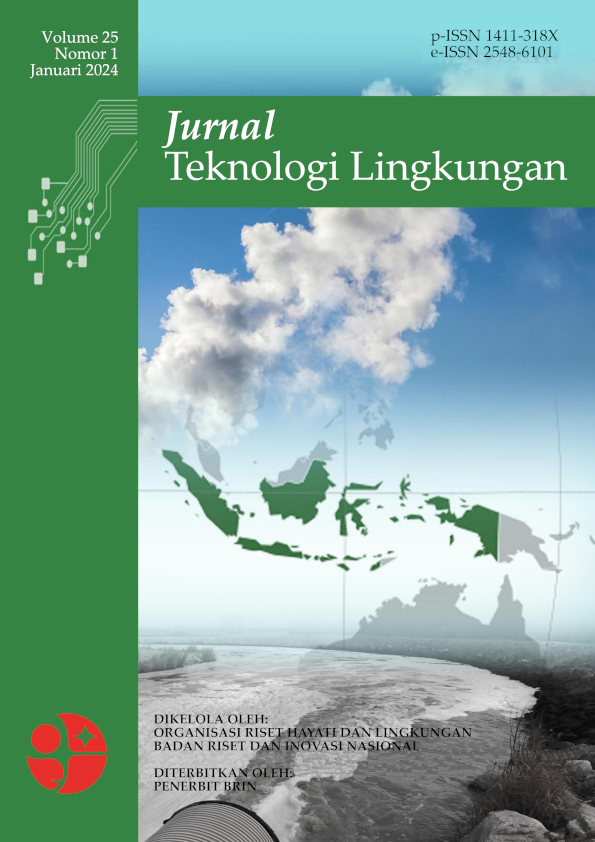Treatment for Landfill Leachate Utilize Coagulation-Flocculation Combined with Biofilter
Main Article Content
Abstract
Air lindi yang dihasilkan dari Tempat Pemrosesan Akhir (TPA) Sampah mengandung bahan organik dan nutrien yang tinggi. Metode koagulasi-flokulasi terpadukan biofilter aerobik-anaerobik merupakan salah satu alternatif teknologi untuk pengolahan air lindi. Penelitian bertujuan untuk mengkaji efisiensi kombinasi koagulan Al2(SO4)3 dan FeCl3 pada proses koagulasi-flokulasi terpadukan biofilter dalam penurunan kadar Biological Oxygen Demand (BOD) dan Total Suspended Solid (TSS) pada pengolahan air lindi TPA. Metode pengumpulan data dilakukan dengan cara metode eksperimen air lindi dengan dua langkah pengolahan, yaitu koagulasi-flokulasi dan dilanjutkan dengan biofilter secara aerobik dan aerobik. Koagulan yang digunakan yaitu aluminium sulfat dan feri klorida dengan variasi komposisi 12 g/L:3 g/L (R.K1), 12 g/L:7 g/L (R.K2), 16 g/L:3 g/L (R.K3), dan 16 g/L:7 g/L (R.K4). Hasil penelitian didapatkan bahwa komposisi koagulan pada K4 mampu menurunkan konsentrasi BOD dengan efisiensi sebesar 87,99% dari konsentrasi 2.331 mg/L menjadi 280 mg/L dan konsentrasi TSS dengan efisiensi 81,48% dari konsentrasi 108 mg/L menjadi 20 mg/L. anfaat dari penelitian ini yaitu menjadi alternatif yang mudah diterapkan untuk menurunkan tingkat polutan pada air lindi agar tidak mencemari lingkungan. Kedepan, masih perlu diupayakan inovasi teknik untuk dapat menurunkan BOD sesuai ketentuan baku mutu.
Abstract
Landfill leachate contains high organic matter and nutrients. The coagulation-flocculation method integrated aerobic-anaerobic biofilter is one of the technological alternatives for leachate treatment. This research aimed to examine the effect of the combination of Al2(SO4)3 and FeCl3 coagulants on the coagulation-flocculation process integrated with biofilters. The data were collected from two-stage leachate experiments (coagulation-flocculation), followed by aerobic and anaerobic biofilter. The coagulants used are aluminum sulfate and ferric chloride with composition variations of 12 g/L:3 g/L (R.K1), 12 g/L:7 g/L (R.K2), 16 g/L:3 g/L (R.K3), and 16 g/L:7 g/L (R.K4). The results showed that the coagulant composition in K4 was able to reduce BOD concentration with an efficiency of 87.99% from a concentration of 2,331 mg/L to 280 mg/L and TSS concentration with an efficiency of 81.48% from a concentration of 108 mg/L to 20 mg/L. The benefit of this research is that it is an alternative that is easily applied to reduce the level of pollutants in leachate water so as not to pollute the environment. In the future, it is still necessary to seek technical innovations to be able to reduce BOD according to quality standards.
Article Details

This work is licensed under a Creative Commons Attribution-ShareAlike 4.0 International License.

